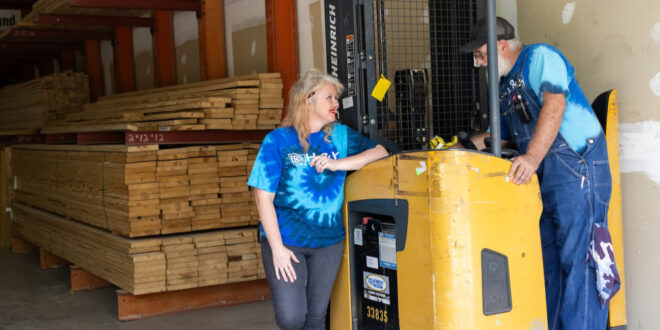Much like a report from your doctor, financial statements provide valuable insight into the health of your business. They can explain some of the aches and pains you might be feeling and uncover hidden issues you should address before they become full-blown problems.
Even if the financial health report is good, your income statement and balance sheet can offer direction on the ways to best spend your resources as you grow the business. Any strategy for the future should be rooted in the insights from financial metrics such as your key performance indicators (KPIs), but what many retailers find challenging is understanding how to use that information to make real changes. They may also be reluctant to share financial information with the rest of their staff, who can actually be an asset when they understand how they can impact those financial drivers.
This month, Hardware Retailing spoke with two retailers who used their KPIs as a starting point for addressing challenges in their operations. Their insights will help you take specific steps to utilize the wealth of data contained in your financial statements and strategize for the future, including training your team on understanding financials so they can help you be successful.
Easing Growing Pains
If you were to chart sales at H & H Home and Hardware in Marion, Kentucky, for the past five years, it might look like a rocket taking off. That’s at least what it felt like for owner Shanna West and her family. But a trend of rising sales wasn’t all the company’s accounting statements had to say. A deeper look at the numbers revealed some challenges creeping in that would be easy to miss for anyone focused only on top-line sales.
In 2019, Shanna and her husband David bought into the family business with Shanna’s parents, Alan and Stacy Hunt. Through a series of events that included moving to a new location, expanding the size of the building, adding categories after competitors closed and riding a sales boom during the pandemic, the operation today is six times larger than it was in 2019. West and the other owners found themselves so involved in the day-to-day running of the business, they had little time to think about setting goals for the future.
“The idea of ‘working in your business rather than on your business’ described our management style,” West says. “We found ourselves exhausted after record-breaking sales weeks and lacking real direction and reasoning when we discussed the future.”
While the business appeared strong, the owners faced burnout. There were also underlying issues to address if the business was to be sustainable in the long term, such as the need for a better inventory management strategy, a more efficient use of the salesfloor and better cost controls, to name a few.
They were all issues West was able to see with greater clarity after joining the North American Hardware and Paint Association’s (NHPA) Retail Management Certification Program in 2022. During that time, as part of the final project for the class, she began taking a hard look at the company’s financial statements, where there were clues about how to address those critical issues.
The project included comparing KPIs from H & H Home and Hardware with those in NHPA’s Cost of Doing Business Study (CODB), an annual compilation of average financial and operational year-end data from home improvement stores across the country. The results began to change the way West thought about the business.
“The most eye-opening and valuable tool we used was the CODB,” West says. “I had always used it more as a wish list of where I wanted our business to be, never understanding how strong of a tool it could be.”
For example, West knew staffing was one of the areas in need of improvement. While H & H Home and Hardware overall performed better than the average high-profit store, a gap analysis study comparing the store’s P&L with the CODB revealed the owners’ payroll was several percentage points higher than the national average. That’s because the owners were filling most of the typically higher paid positions.

In contrast, wages for other employees were lower than average, because there were fewer staff. For West and the other owners, this discrepancy was a signal that they were understaffed. There was an opportunity to move talented people into leadership positions and pay them more. It was a win all around. Giving staff new responsibilities led West to develop much-needed job descriptions and shift some responsibilities from company ownership to staff who could help run the business.
Another change implemented from data in the CODB included investing in payroll and training, incentivizing employees to be highly productive on the salesfloor, which created more efficiency out of fewer people.
While it can measure past performance, the value in using the CODB is in how it can help set goals for the future, West says. Comparing the company’s financials line-by-line with the CODB, revealed what could have been had leadership made different choices. As a result, West and the other owners began focusing less on analyzing what they could have done differently in the past to be more in line with the benchmark and more on discussing the changes they could make in the future to get a better outcome.
“Comparing ourselves with the CODB really changed our monthly conversations,” West says. “It equipped our ownership team with confidence in decision-making since we now have a tool to measure ourselves by at any given time.”
Another important takeaway from the project was the importance of looking at each KPI in context.
“It’s important to understand what the data means by itself and what it means to the whole,” West says. “How does it relate to the rest of your business? Be open to everything it may be trying to tell you.”
For example, if your inventory costs in a particular category are high, it could mean you overspent in that area. Or, it could mean you’re growing that category, which may require taking a little extra risk. Instead of seeing a number that is off the norm as a problem, first put it in context with what else is happening in the business.

Finally, understanding the metrics on your accounting statements will do you no good unless they lead you to an action plan.
“We look at reports as something to take action with, rather than just show performance,” West says. “Ask yourself, ‘What am I going to do with this report?’”
Today, the business continues to grow, but rather than the frantic pace that characterized those first few years, West says they now have processes in place that correct the challenges of the past, and financial statements are central to their ability to manage the business.
“As a result, our decisions now are more strategic than they used to be. Sure, you can make decisions using a gut feeling,” West says. “It’s even better to have a gut feeling and be able to prove it with numbers.”
Increasing Financial Transparency
Most retailers prefer to keep their financial statements as confidential as possible. However, there’s value in showing at least a portion of your performance metrics to your employees. As Ash Ebbo at Clement’s Paint in Austin, Texas, has discovered, a little transparency can go a long way to help employees understand what they need to do to make your company profitable.
While Clement’s Paint, with eight locations around Austin, has built a solid reputation for good customer service and has a loyal customer base, Ebbo also feels the pressure of a competitive market. Rising costs and expenses, combined with customers who still demand competitive prices have eroded margins. A post-pandemic market correction flattened sales.
As part of a strategy to invigorate profits, Ebbo brought in NHPA to conduct a seminar on financial training for the store’s managers. During the session, managers learned how to read a profit and loss statement, the significance of key metrics and what they could do to improve them. For many, the training offered a whole new way of thinking about the business.
Ebbo combines certain line items on the P&L statement to make the more sensitive areas vague, only giving managers quarterly reports, as that offers a better perspective of how the numbers are trending.

“The training we had with NHPA was excellent, very beneficial to what we were trying to do,” Ebbo says. “As soon as our managers could see and understand the P&L statement, they instantly started diving into ideas about how they could improve it. We also did the DiSC training, which has really helped with our team’s communication skills and has helped create a more effective work environment.”
One of the challenges facing Clement’s Paint was an overall decline in paint sundry sales. While some locations were posting healthy sundry sales numbers, others were far below where they should be.
“One store’s sales were particularly low, and when the manager at that location saw the numbers, he was a little surprised, but immediately started thinking about how to change it,” Ebbo says.
Floor-level associates don’t get access to financial records but Ebbo wants them to understand how to influence the size of the sale. Conversations include talks about average transaction size in terms of lines per ticket, or how many items are sold per transaction.
“If every ticket only has one or two lines on it, that probably means we’re not getting the sundry sales,” Ebbo says. “There should be at least four to five lines on that receipt. For every customer who forgets to pick up a sundry item at our store, we’re giving our competitors a chance to sell it to them.”

Clement’s Paint has also started a monthly sales campaign to encourage sundry sales. The management team works together to pick a few bestselling items, mark them at a deep discount and merchandise them in a highly visible area of the store, generally near the cash register. Merchandising is the same in all eight locations so customers get used to seeing these sundry sale items, regardless of where they shop. The display and location make it easy for employees to suggest an add-on sale each time a customer makes a purchase.
No step is too small to increase sales and cut expenses. Giving employees exposure to the operation’s finances empowers them to participate in helping Clement’s improve profits and feel like they have a stake in the business.
“Financial training has made our employees smarter and helped managers make more educated decisions,” Ebbo says.
Take Action, Boost Your Business
New & Improved: Keep Your Three Pennies
Everyone on your team should have some understanding of the cost involved in running a business. The best way to start is to use NHPA’s popular training course, Our Three Pennies of Profit. It uses a story format to explain the basics of profit and loss in a retail environment. It is essential training for all employees to show how reducing retail shrinkage is one of their responsibilities. Employees also learn the concept of variable pricing and why simply raising prices isn’t the answer to increasing profit.
Go to YourNHPA.org/membership to learn more.
Close the Gap on Operating Expenses
Performing a gap analysis of all operating expenses can reveal areas where you may be overspending. Create a gap analysis by listing your expenses in one column and industry averages, as reported in NHPA’s Cost of Doing Business Study, in the next. Mark the top five areas where you are spending more than the national average, then identify the cause for the discrepancy and look for solutions. Learn more about the Cost of Doing Business Study at YourNHPA.org/CODB.
 Hardware Retailing The Industry's Source for Insights and Information
Hardware Retailing The Industry's Source for Insights and Information






